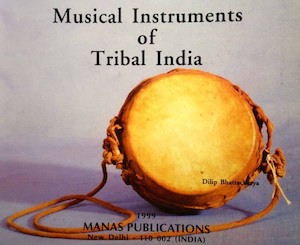Audio contents on YouTube
“For centuries, Santhals, spread across West Bengal, Jharkhand and Bihar, have nurtured culture and heritage. Some of the finest music and art traditions originated in this tribe and went on to influence people like Pannalal Ghosh and Kazi Nazrul Islam.” The Hindu (Friday Review), 23 April 2015 >>
References to the influence of Santali culture on Pannalal Ghosh in the PhD thesis by Carl Clements *
Abstract, p. iv
Pannalal Ghosh (1911-1960) is credited with the introduction of the bānsurī (North Indian bamboo flute) into Hindustani classical music in the twentieth century. While the transverse flute played a significant role in the music of India at least since the early centuries CE, it had lost its status as a prominent instrument in Indian art music several hundred years before Ghosh brought it to the forefront of Hindustani classical music. […]
Interlude in Jhargram
[His] life took a brief turn back to an even more rural existence than during his time in Barisal. […]
At this time, he was about eighteen years of age. […]
While he worked hard all day, he spent much of his free time with the Santhal villagers. One of the more interesting points in this story is the fact that the Santhals played a kind of bansuri, as well as a drum known as madal, along with their singing and dancing. PG very much liked the music and dancing of the Santhals, and in turn, the Santhals enjoyed his bansuri playing. Parul Ghosh notes that, despite the many concerts he played for cultivated audiences, in later years he looked back to his days playing for the Santhals as his greatest joy. He especially liked playing for the children, as they listened with their hearts instead of their heads. […]
After learning archery from the Santhals, he won a prize of “eight excellent arrows” for his skill. However, the prize was not only for skill, but for extreme valor. […] After four months working in Jhargram, the company’s work there was finished, and PG returned to Calcutta. However, this short episode in his life seems to have had a powerful impact on him. Parul Ghosh’s account of this time places great importance on his love for rural simplicity, his valor, his openness to new musics and experiences, and his preference for music that comes from the heart. […]
Bengali source quoted above:
Ghosh, Parul. 2000. “Vanshi-Parampara ke Samvahak: Pandit Pannalal Ghosh.” Chayanat 89: 5-23. (Translated from Bengali to Hindi by Madanlal Vyas).
* Source:
PANNALAL GHOSH AND THE BANSURI IN THE TWENTIETH CENTURY
by CARL J. CLEMENTS
A dissertation submitted to the Graduate Faculty in Music in partial fulfillment of the requirements for the degree of Doctor of Philosophy, The City University of New York
UMI 3426642 Copyright 2010 by ProQuest LLC.
[Bold typeface added above for emphasis]
Research the above issues with the help of Shodhganga: A reservoir of theses from universities all over India, made available under Open Access >>
Related contents

Musical Instruments of Tribal India
by Dilip Bhattacharya >>
See also
Audio | Santali Traditional and Fusion Songs: Ghosaldanga Bishnubati Adibasi Trust – West Bengal
Banam (Santal string instrument)
– eBook: Banam Making Workshop at Bishnubati | Daricha Foundation
– Video: Banam Raja | Interview with Nunulal Marndi | Reviving the Huka Banam
eBook | Background guide for education
eBook | Free catalogue: Banam: One of the ancient musical instruments of the Santals
eBook | Free catalogue: Museum of Santal Culture (Bishnubati) – West Bengal
India’s tribal, folk and devotional music: Secular and ceremonial songs
Infusing the Santhali Element in Schooling by Rina Mukherji
Museum of Santal Culture Bishnubati
Music and dance | Adivasi music and the public stage by Jayasri Banerjee
Puppetry | Santali Chadar Badni / Chadar Bad(o)ni”| Daricha Foundation
– eBook: Cadence-and-counterpoint-documenting-santal-musical-traditions
– Video: Damon Murmu | Sahadev Kisku | Shibdhan Murmu
Santal | Santal creation myth | Santal Parganas | The Santals by Boro Baski
Santal cultural traditions documented on the Daricha Foundation website
Santal flute music: Audio resource by Adivaani.org – West Bengal & Jharkhand
Santali language | eBook | A Santali-English dictionary – Archive.org
Santal mission | Santali songs recorded in 1931 at Kairabani (Jharkhand)
Santal music | Santal Musical Traditions: National Museum (exhibition catalogue)